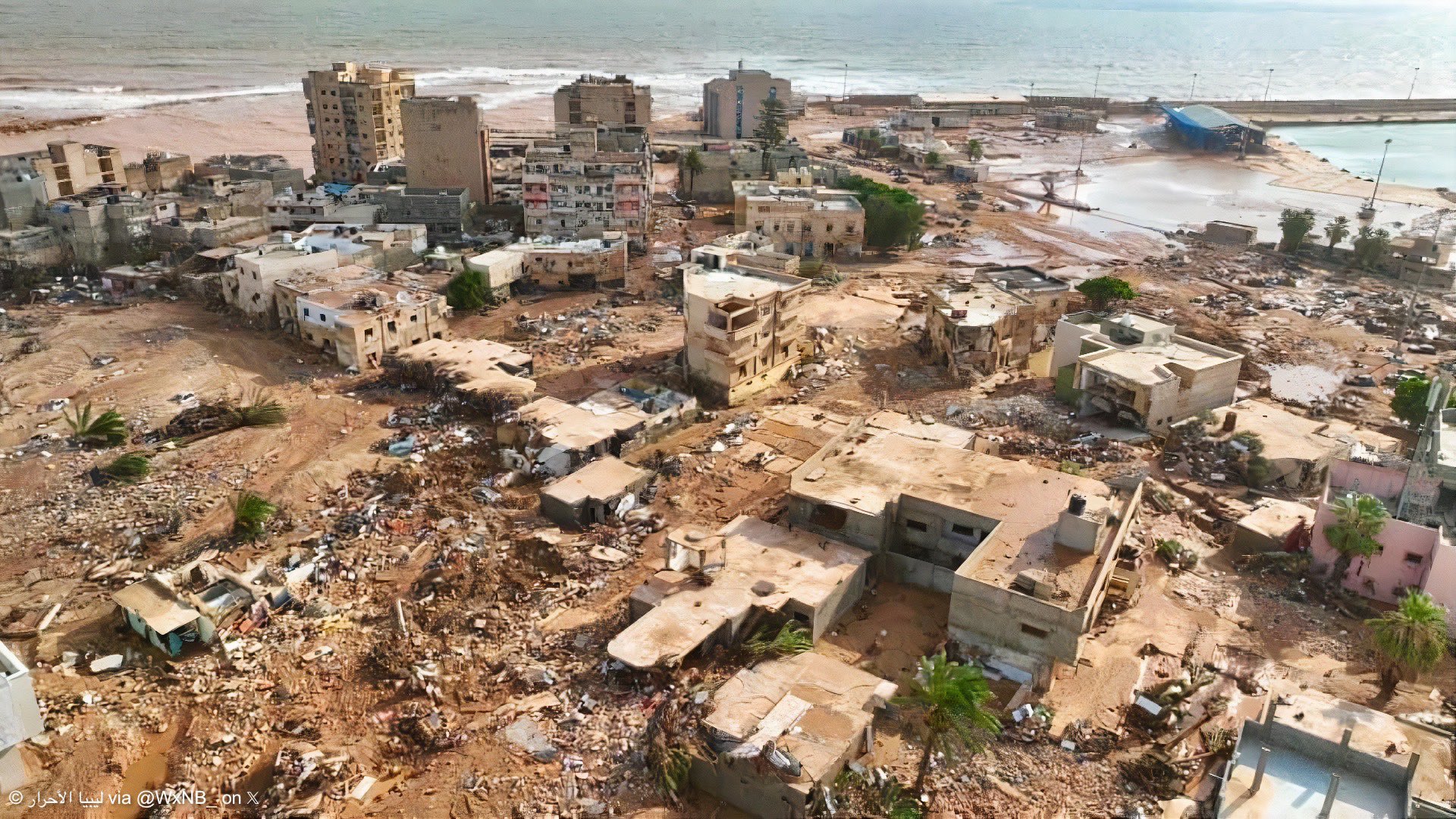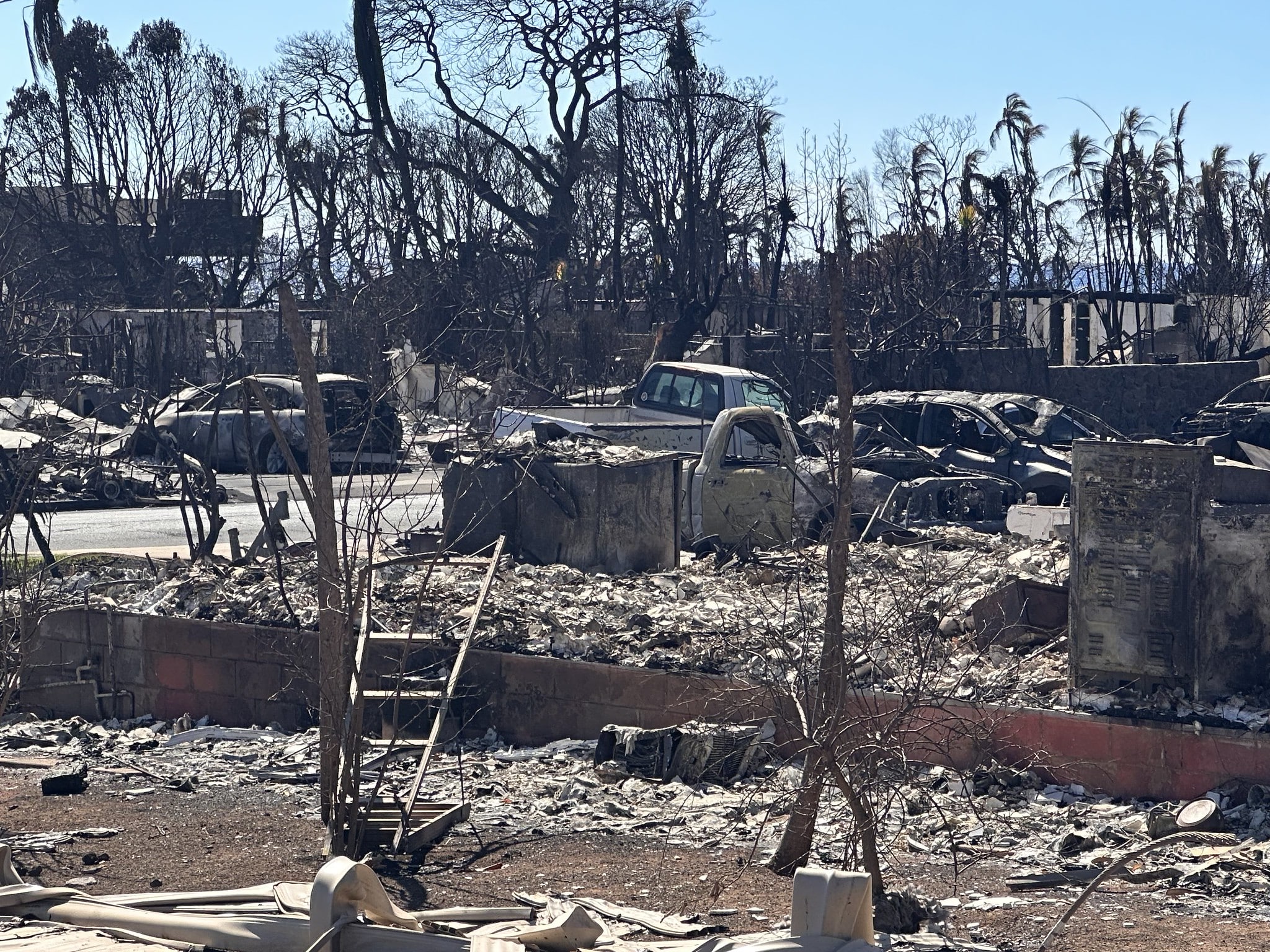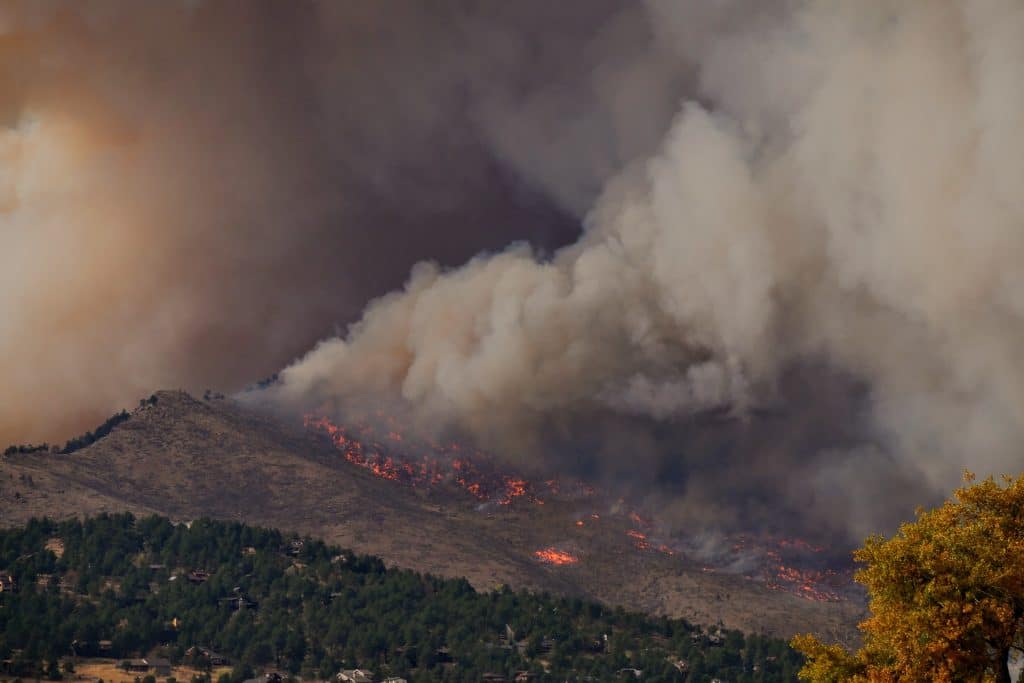The EU’s Copernicus Climate Change Service recently confirmed that summer 2023 was the hottest on record, and by a “large margin”. Scientists found that the average global temperature between June and August was 16.77C (62.18F), 0.66C above the 1990-2020 average. The summer of records has been characterised by extreme heatwaves that have swept across the globe as well as other natural disasters such as flooding, hurricanes, and wildfires. In this article, we take a look at this summer’s main extreme weather events and how climate change shaped them.
—
Heatwaves
Summer 2023 was the hottest on record, and by a “large margin”, scientists confirmed.
Temperatures in June were 0.5C above the 1991-2020 average, with twice the chances of breaking the previously joint 1940/1975 record of 14.9C. Meanwhile, July has also shattered records, becoming the hottest month in at least 120,000 years. For the first 23 days of the month, global temperatures have risen to 16.95C on average globally. More than 80% of people on the planet have experienced a hotter July, according to a recent study.
Another study found Southeast Asian countries such as Vietnam, Laos and Thailand to be the most vulnerable to heatwaves and the first to experience this summer’s intense heat. In late spring, the Hoi Xuan region of Vietnam recorded a boiling temperature of 44.1C, breaking the 2019 record of 43.4C. Neighbouring country Laos also reached similar temperatures, hitting a historic high of 43.5C. Bangkok, Thailand’s capital, saw a record temperature of 41C.
Provinces in China also experienced shocking temperatures this summer. In Xinjiang, a province in northwest China, temperature reached 52.2C. The capital Beijing also experienced temperatures past 40C for several weeks, and in mid-July saw its second highest temperature ever recorded since 1961.
On the opposite side of the globe, the US also experienced scorching temperatures, with California’s Death Valley reaching the highest temperature ever recorded on Earth: 56.7C. A heat dome that covered the area is said to be the cause behind the scorching heat.
Last but not least, European countries and the Mediterranean were also severely affected by this year’s heatwaves. In mid-July –peak tourism season in the country – local authorities in 16 Italian cities issued a red heat alert. The islands of Sicily and Sardinia saw maximum temperatures of 49C, a new record high. Recent research by the World Meteorological Organization (WMO) found that Europe is the world’s fastest-warming continent and has warmed twice as fast than any other continent since the 1980s.
Aside from temperatures on land, ocean temperatures are on the rise, too. In early August, the Mediterranean Sea surface temperatures hit record highs of 28.7C. For context, 17,000 marine species inhabit the Mediterranean Sea, and its temperatures are now warming 20% faster than the global average. In the US, Florida’s sea surface temperatures reached bath-tub levels. Here, a buoy in the Manatee Bay of Florida Keys measured a scorching temperature of 38.38C. To illustrate the abnormality of the situation, ocean waters in this area are usually their warmest around March.
This summer’s extreme temperatures are said to be an effect of the El Niño, a climate phenomenon related to the warming of sea surface temperatures in the central-east equatorial Pacific. Earlier this year, experts had warned that its comeback this year is making it “very likely” that global average temperatures will exceed 1.5C of warming, beyond which even half a degree will significantly worsen the risks of drought, floods, extreme heatwaves, and result in food and water insecurity and poverty for millions of people worldwide.
You might also like: Mass Coral Bleaching Event in Florida as Ocean Temperatures Exceed 100C
Floods and Hurricanes
Floods and hurricanes hit several parts of the globe this summer, with costly impacts on the economies of these countries, as huge amounts of funding are needed in order to repair broken infrastructure.
In September, Libya experienced the most devastating floods in the country’s history, which killed more than 6,000 people, with more than 10,000 still missing. Behind the flooding – the deadliest weather event of 2023 to date – was Mediterranean Storm Daniel, which brought torrential rains to Libya’s northeast. Torrential rains and subsequent floods led to the collapse of two dams in Derna, a port city of 125,000 inhabitants on the Mediterranean coast. According to the Libyan Government of National Unity (GNU), the country will need at least 300 million dinars (US$67 million) to rebuild their road and bridge network.

The city of Derna, Libya, in the aftermath of the devastating floods unleashed by Mediterranean Storm Daniel, which claimed more than 6,000 lives. Photo: ليبيا الأحرار/Twitter.
Earlier this month, devastating floods from a cyclone that affected 60 cities in southern Brazil killed dozens of people and displacing more than 2,300 across the country.
China has also been subjected to flooding several times this summer, with the most significant one being in the Southeastern region in September. They were caused by torrential rain brought about by Typhoon Haikui, which hit the region and caused losses of about 552.1 million yuan (US$ 75.6 million). Xiamen, located in the Fujian province, has been flooding for a total of three days, setting a new record for the longest heavy rain to ever hit the city.
Another devastating flooding event destroyed homes and businesses in China’s northeastern Hebei province in August, with the storm making history as the heaviest rainfall the area has experienced in at least 140 years. The extreme flooding was once again caused by a typhoon, Doksuri, which swept through the northern province of Hebei, displacing more than a million people. Typhoon Doksuri did not stop in China and instead reached the Philippines, bringing devastating floods across than five regions and dozens of landslides due to heavy rainfalls.
You might also like: What are the Main Causes and Effects of Floods Around the World?
Wildfires
Devastating wildfires swept across the globe this summer, costing millions of dollars on countries’ economies and causing air pollution to skyrocket not only in the affected areas but also in neighbouring countries.
This summer’s wildfires in Greece are confirmed to be Europe’s largest single fire in history. The fire had completely burnt 77,000 hectares (190,271 acres) of land in a region close to the Turkish border. The devastating fires were said to be charged by strong winds and high temperatures that soared above 40C, altogether causing a prolonged lack of precipitation and drought in the area. Earlier this summer, authorities on the Greek island of Rhodes, a famous tourist destination, evacuated more than 19,000 people after dozens of ferocious wildfires spreading uncontrollably across the island. The fires started during the hottest weekend the country has recorded in 50 years.
Another deadly fire broke out on the Hawaiian island of Maui in mid August. The historic city of Lahaina was burnt to the ground, killing 97 people and prompting US President Joe Biden to issue a major disaster declaration. The Maui wildfires burned an estimated 878 hectares (2,170 acres) of land and damaged more than 2,200 buildings. The Federal Emergency Management Agency estimates it will cost US$5.5 billion to rebuild the city. Similarly to Greece’s wildfires, the devastation of Hawaii’s fires was partly blamed on abnormally high temperatures, low humidity, and strong winds from a close hurricane.

Burned vehicles, homes, and trees in the community of Lahaina following a devastating wildfire. Photo: State Farm/Flickr.
Countries in the Mediterranean and Black Sea region have also fallen victim to extreme wildfires. Parts of Sicily, an island located in Southern Italy, have been burnt by blazes caused by soaring temperatures. Authorities estimate that the wildfires have caused more than 280 million euros (US$2.3 million) worth of damage.
However, fires in Canada went down in history as the most severe of all, even affecting areas surrounding the region. Smoke from wildfires reached as far as the East Coast of the US, significantly worsening air quality in the area and prompting authorities to issue air pollution warnings that affected more than 98 million people across the Northeast, Midwest and mid-Atlantic. On June 16, New York City was the world’s most polluted city, with 43.4 times the PM2.5 concentration value recommended by the World Health Organisation (WHO).
According to the World Meteorological Organisation (WMO), extreme temperatures are also an underlying cause of pollution-related health problems, highlighting a “vicious cycle” of climate breakdown and air pollution. Climate change causes heatwaves and extreme temperatures that result in droughts and low precipitation, leading to wildfires in return. Wildfires and the strong currents sweep particles through the air, worsening air pollution. And so, the cycle repeats itself.
The Role of Climate Change in the Extreme Weather Events of Summer 2023
There is no doubt among the scientific community that climate change was the driving force behind the numerous deadly climate events this year.
For a starter, climate change is one of the primary causes behind sweltering heatwaves. According to a study by non-profit Climate Central, climate change made southern US heatwaves five times more likely to happen.
“Human-caused climate made the extreme and extremely unusual temperatures in Mexico and the southern US much more likely,” said Dr. Andrew Pershing, vice president for science at Climate Central.
Extreme temperatures also result in prolonged droughts and devastating wildfires. For example, the fires that ripped through Hawaii this summer were blamed on unusually hot and dry conditions, which have dried vast areas of land. Dry leaves, grass, branches, and other organic materials are the best fuels for fires to ignite and propagate quickly.
More on the topic: What Causes Wildfires?
“We can say there are conditions that are consistent with wildfire, wildfire size and expansion that are changing as climate changes,” Erica Fleishman, director of the Oregon Climate Change Research Institute at Oregon State University, told CNN. “And some of the things that we’re seeing with this wildfire in Maui are consistent with some of the trends that are known and projected as climate changes.”
Scientists also found that climate change is a contributing factor to the deadly, three-year long Horn of Africa drought, which has resulted in a catastrophic humanitarian crisis in Eastern countries, including Ethiopia, Kenya, Somalia. A report by the World Weather Attribution said the deadly combination of heatwaves and low rainfall were caused by human-induced global warming, due to the strong increase in evaporation caused by high temperatures.
Deadly amounts of rainfalls are also a direct consequence of climate change. A study published in September 2023 found that climate change had made Libya’s flood disaster 50 times more likely and Greece’s fires up to 10 times more likely and 40% more intense. Once again, the World Weather Attribution group evaluated the role of climate change in extreme weather events, and found that the impact of the floods were made worse by factors such as deforestation and urbanisation in the countries, which led to a change in landscape and exposed more people to flooding.
“The Mediterranean is a hotspot of climate change fuelled hazards,” said Friederike Otto, a climate scientist at Imperial College London.
Conclusion
The worsening of climate change is becoming more prevalent due to the frequency of extreme climate events this summer. From wildfires causing haze of smoke that induce pollution related health problems to hurricanes and floods that destroyed millions of homes and infrastructure around the world, climate change is without a doubt behind these summer’s extreme weather events. This is an unfortunate cycle that keeps on repeating itself, causing millions of people to experience devastation and loss over the summer. Authorities and governments around the world must reduce and phase-out emissions as soon as possible, in order to avoid more frequent and intense natural disasters in the coming years.
You might also like: 15 Biggest Environmental Problems of 2023


















